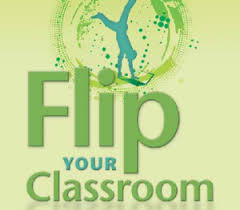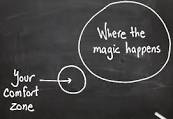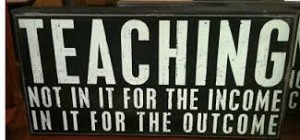Warning: This is what Swiss Cheese Learning could lead to….
In all seriousness, reading this chapter really got me thinking about the purpose of education. Is it to push kids into the next topic/lesson/unit regardless of what they’ve learned, or is it to make sure our kids are leaving our classroom masters of their learning? In the previous chapters, Khan laid out his beliefs on the broken model of our educational system. A system that was put in place over a hundred years ago for a variety of reasons, many of which are no longer relevant. A system that was built on a model of making a bunch of followers instead of leaders. Learning was divided into increments of time instead of mastery. “Subjects” were taught in isolation. And 120 years later, not much has changed.
When looking back at my own schooling, I absolutely fell victim to Swiss cheese learning. I was always a good student, who got good grades and was tracked into the more advanced classes. But the year I took algebra, I never fully grasped the concepts beyond rote memorization. I passed the class, but when I took Calculus, I felt lost. I struggled at keeping up with the material and eventually fell into the mindset that “I didn’t need Calculus anyway.” As Khan said, “A shaky understanding early on will lead to complete bewilderment later” (pg. 83) and that we are “setting them up to fail” (pg. 84).
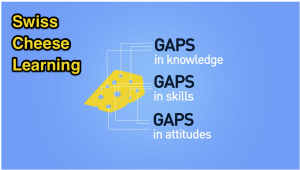
Reading this was really disheartening, especially since I had experienced this type of learning myself. But fear not! Sal has a way to fill in the holes: mastery. In order for students to be truly successful, they need to gain a deep understanding of the concepts and then continue to revisit them through active experiences. This is the idea Khan Academy was founded on. If we could give our students the time and opportunity to revisit concepts, teach others, and have authentic experiences, then they will have a strong foundation on which to grow from. Focusing on mastery instead of time increments requires a change in mindset though. The model we have been operating under represents a fixed mindset. It seems impossible to change. But if we could all shift to a growth mindset, we could see that our system needs to change: less focus on checking off standards on a curriculum map and more focus on fully understanding a concept.
Khan made a statement at the end of the chapter that really stood out to me. He said that students see school as “a class rather than a gateway” (pg. 89) Our job as educators should be to make learning relevant, connected and purposeful. It should reveal new ways of thinking and open up new worlds to discover. But according to Khan, “one of the central shortcomings of our broken classroom model” is the “failure to relate classroom topics to their eventual application in the real world” (pg. 88). This is a direct result of Swiss cheese learning.
We are extremely lucky in Kipling to have a brand new STEAM lab in the LMC. My class started their first unit this past week and I’ve already seen how students need to incorporate and integrate multiple disciplines. STEAM gives students the space and the permission to explore, to be active with their learning, to connect with real world applications. The letters in the acronym spell it out: we are not teaching subjects in isolation here. We are trying to fill in those holes in the cheese.





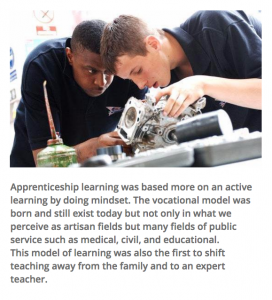
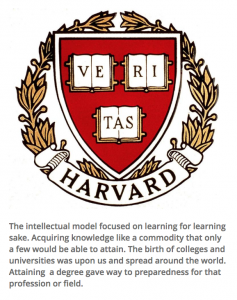




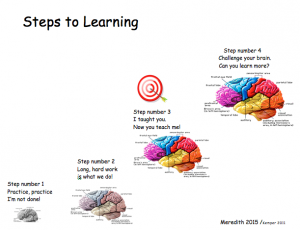
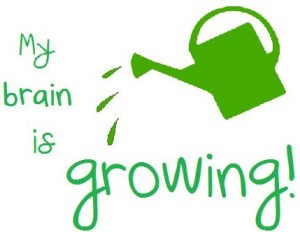


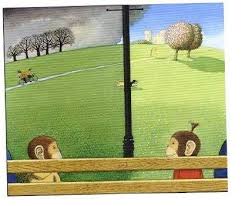


 described austere person (page 27). What flows throughout the book (and not to get too far ahead of my part here …) is a research and evidence base. Khan’s work and the successes he and the Academy enjoy are actually grounded in research, evidence, study, and affirmation. Though he appears to start out whimsically, he shares small nuggets of evidence and research as the base for his decisions. For example, in this chapter, he spends a few pages identifying why the length of his videos rests around 10 minutes.
described austere person (page 27). What flows throughout the book (and not to get too far ahead of my part here …) is a research and evidence base. Khan’s work and the successes he and the Academy enjoy are actually grounded in research, evidence, study, and affirmation. Though he appears to start out whimsically, he shares small nuggets of evidence and research as the base for his decisions. For example, in this chapter, he spends a few pages identifying why the length of his videos rests around 10 minutes. dedicated to public school teaching and administering I draw this belief). I also love the inclusion of A for art in the district’s recent STEAM push for integrated science, technology, engineering, arts, and mathematics, as focus areas. Finally I see an artist’s pallette as a great metaphor for a teacher’s lesson plan/toolkit – he or she needs many colors on many days for their many “faces” and learners!
dedicated to public school teaching and administering I draw this belief). I also love the inclusion of A for art in the district’s recent STEAM push for integrated science, technology, engineering, arts, and mathematics, as focus areas. Finally I see an artist’s pallette as a great metaphor for a teacher’s lesson plan/toolkit – he or she needs many colors on many days for their many “faces” and learners!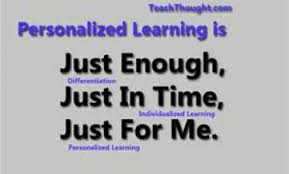 Khan masters simplicity and impact through basic, easy to understand concepts.
Khan masters simplicity and impact through basic, easy to understand concepts.